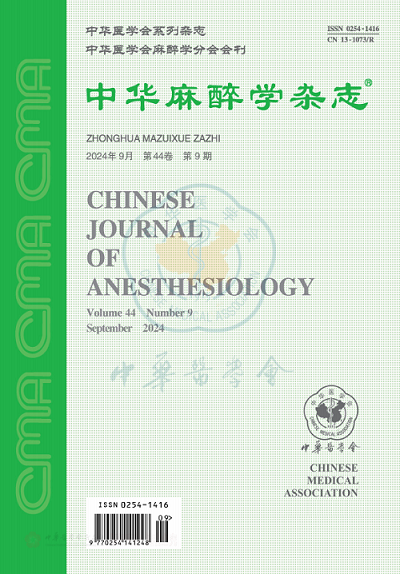Analysis of difference in activation or inhibition of cerebral cortex during induction of and emergence from general anesthesia: functional near-infrared spectroscopy
Q4 Medicine
引用次数: 0
Abstract
Objective To investigate the brain mechanism of anesthesia-related loss of consciousness and awakening though measuring activation or inhibition of cerebral cortex during induction of and emergence from general anesthesia using functional near-infrared spectroscopy. Methods Twenty-two American Society of Anesthesiologists physical status Ⅰor Ⅱ patients of both sexes, aged 40-80 yr, undergoing thoracoscopic partial lung resection, were selected. The functional near-infrared spectroscopy was used to determine the level of oxyhemoglobin in cerebral cortex before and after anesthesia induction and before and after emergence from anesthesia, and a positive number was considered as activation and a negative number as inhibition. Results Compared with the baseline before anesthesia induction, the level of oxyhemoglobin in the premotor cortex was significantly decreased (P 0.05). Conclusion Frontopolar area is activated, and premotor cortex is inhibited during induction of general anesthesia, indicating that induction of anesthesia may first affect the integrated function of management and execution of the brain, and the motor regulation ability is weakened. Individual difference in brain areas activated during emergence from anesthesia is larger, and activated and inhibited brain regions are not found. Key words: Anesthesia, general; Cerebral cortex; Spectroscopy, near-infrared全麻诱导和苏醒过程中大脑皮层激活或抑制差异的功能性近红外光谱分析
目的应用功能性近红外光谱法测定全麻诱导和苏醒过程中大脑皮层的激活或抑制,探讨麻醉相关意识丧失和苏醒的脑机制。方法选择22例美国麻醉师学会身体状况Ⅰ或Ⅱ级患者,年龄40~80岁,行胸腔镜肺部分切除术。使用功能性近红外光谱法测定麻醉诱导前后和麻醉苏醒前后大脑皮层中氧合血红蛋白的水平,正数视为激活,负数视为抑制。结果与麻醉诱导前基线相比,运动前皮质氧合血红蛋白水平显著下降(P<0.05),并且电动机调节能力减弱。麻醉苏醒过程中激活的大脑区域的个体差异较大,未发现激活和抑制的大脑区域。关键词:麻醉,全身;大脑皮层;光谱学,近红外
本文章由计算机程序翻译,如有差异,请以英文原文为准。
求助全文
约1分钟内获得全文
求助全文

 求助内容:
求助内容: 应助结果提醒方式:
应助结果提醒方式:


